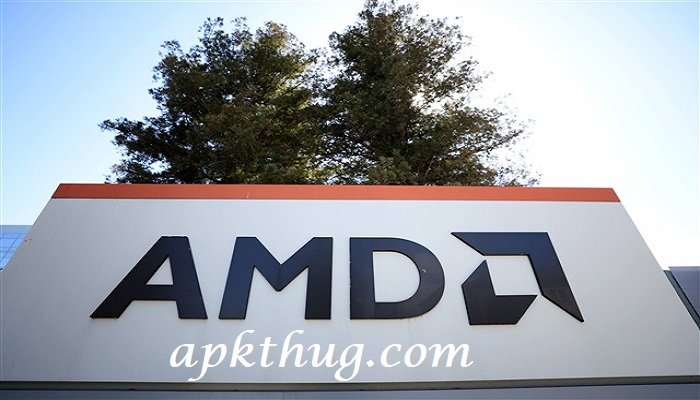AMD’s PC Business Bottoms Out A Closer Look at Circumstances

AMD’s PC Business Bottoms Out due to experiencing a downturn, but the company’s potential for resurgence remains intact. The company is facing the harsh reality of AMD’s PC business bottoming out. Also, it is formerly regarded as a rising star in the PC industry. The journey from a promising contender to a struggling player offers insights into the challenges and opportunities that lie ahead. Not too long ago, AMD is heralding for its innovative strides in the PC sector. The company’s Ryzen processors challenged Intel’s dominance by offering impressive performance at competitive prices. This surge in popularity was followed by a similar success with their Radeon graphics cards. It provided an alternative to Nvidia’s offerings. AMD’s stock soared, and it seemed like the company was on an unstoppable trajectory.
However, the technology landscape is notoriously capricious. AMD’s recent decline in the PC business can be attributed to a series of challenges. First, supply chain disruptions and semiconductor shortages dealt a severe blow to production capabilities. Due to the delays in product launches and failure to satisfy market demand, customers started turning to rivals. Moreover, it offered more accessible solutions. Second, AMD made some notable technological advancements. They were unable to keep up with the quickly changing demands of the PC gaming and professional industries. Intel managed to regain its footing by launching powerful new processors tailored for these segments. It is attracting consumers who were seeking cutting-edge performance. AMD’s inability to promptly address these evolving requirements allowed Intel to regain lost ground.
AMD’s PC Business Bottoms Out A Deep Information
Despite these challenges, AMD’s situation is far from irreversible. The company can draw inspiration from its past successes and leverage them to overcome the current predicament. One avenue is a renewed focus on research and development. By investing in breakthrough technologies, AMD can regain its reputation as an innovator. Whether it’s in the realm of AI-integrated processors or energy-efficient designs, doubling down on R&D could fuel the company’s resurgence. Furthermore, establishing strategic partnerships can play a pivotal role. Collaborating with software developers, game studios, and other hardware manufacturers can create a more holistic ecosystem that enhances the appeal of AMD products. This approach proved successful for the company in the past and can help revive its fortunes.
Another viable strategy for AMD lies in diversification. While the PC market might be dwindling, other avenues like data centers and laptops are experiencing growth. By redirecting resources towards these areas, AMD can tap into new revenue streams. Furthermore, the recent trend of remote work and digital transformation has escalated the demand for efficient data centers, offering a golden opportunity for AMD to capitalize on this shift. Laptops present another promising frontier. With the world becoming increasingly mobile, laptops have transcended convenience to become a necessity. By crafting processors that prioritize power efficiency without compromising performance, AMD can capture a substantial portion of the laptop market and mitigate the impact of the declining PC sector.

More Information About AMD’s Business
Adaptability is the cornerstone of survival in the tech industry. AMD must reevaluate its strategies and embrace change in order to rebound from its current slump. This includes a comprehensive reassessment of its supply chain and manufacturing processes to mitigate the impact of future disruptions. Learning from the recent semiconductor shortages, the company must develop contingency plans that ensure consistent product availability. Furthermore, AMD’s marketing and communication efforts need a facelift. Engaging with the consumer base through innovative campaigns, clear product roadmaps, and regular updates can rebuild trust and anticipation among enthusiasts.
AMD’s PC Business Hits Rock Bottom Unraveling the Causes:
- Supply Woes and Semiconductor Shortages:
The resounding issue of semiconductor shortages has hit AMD hard. The inability to procure essential components in a timely manner has led to production delays, leaving potential customers frustrated and seeking alternatives.
- Intel’s Resurgence:
While AMD made waves with its Ryzen processors, Intel staged a formidable comeback with its 11th Gen offerings. The allure of Intel’s advanced technology drew away customers, allowing them to regain a competitive edge.
- Lackluster Innovation:
Once hailed as an innovator, AMD’s recent products failed to create the same impact. Consumers are drawn to innovation that tangibly enhances their computing experience, a factor that AMD didn’t fully capitalize on.
- Overlooking Gaming Enthusiasts:
Gamers form a substantial market segment, but AMD’s focus on the mid-range market left high-end gamers wanting more. Nvidia’s GPUs captured the imagination of gamers, sidelining AMD in this crucial arena.
- Marketing and Visibility:
AMD’s marketing efforts seemed to wane, especially when compared to its rivals. While competitors were making headlines and unveiling cutting-edge products, AMD’s voice was drowned out, reducing its mindshare among consumers.
- Inadequate Software Optimization:
Software optimization is a defining factor in the user experience. AMD’s lackluster optimization, especially in gaming, hindered its potential to deliver seamless performance, pushing gamers toward alternatives.
- Monolithic Chip Design:
AMD’s chipset design brought initial success, but it faltered as complexities grew. Intel’s more integrated approach resonated better with consumers looking for simplicity and seamless compatibility.
- Economic Uncertainties:
Global economic uncertainties influenced purchasing decisions. Consumers were more inclined to opt for tried-and-true brands in times of uncertainty, disadvantaging AMD’s bid to attract new customers.

The Ripple Effect How AMD’s Struggling PC Business Impacts the Company:
- Financial Quandary and Investor Confidence:
A dip in the PC business means a hit to the revenue stream. This in turn has an impact on the company’s overall financial situation. The trust of investors may decline, which could result in stock price swings. Investors who previously had unflinching faith in their positions may start to doubt them.
- Innovation Budget Crunch:
Declining revenue from the PC sector could lead to budget constraints on research and development. Innovation often comes with hefty price tags, and a financial crunch might force AMD to divert funds from future breakthroughs to plug current gaps.
- Employee Morale and Talent Retention:
An underperforming PC business could cast a shadow across the company, impacting employee morale. The uncertainty might lead to the departure of top talent seeking more stable grounds, creating a talent drain that hampers AMD’s ability to execute its broader strategies.
- Marketing and Public Perception:
A struggling PC business can inadvertently overshadow the successes of other product lines. AMD’s marketing efforts might focus on damage control rather than highlighting the advancements in other segments, potentially resulting in a skewed public perception of the brand’s overall prowess.
- Resource Allocation Dilemma:
Resources, both human and financial, are finite. A floundering PC business might prompt difficult decisions about where to allocate these resources. This could lead to a scenario where investments in promising areas, like data centers or emerging technologies, are limited due to the need to stabilize the PC division.
Final Words (Conclusion)
AMD’s PC Business Bottoms Out due to experiencing a downturn, but the company’s potential for resurgence remains intact. By addressing supply chain vulnerabilities, focusing on R&D, establishing strategic partnerships, and diversifying into growing markets, AMD can script a remarkable comeback story. The technology industry is a realm of second chances, and with a combination of strategic vision and adaptability, AMD can pave its path back to prominence. The road ahead is undoubtedly challenging, but challenges often reveal hidden opportunities. The outcome of AMD’s transition through this stage will depend on its capacity to draw lessons from the past and make the most of its advantages. The rise, fall, and potential resurgence of AMD is a tribute to the constantly changing technological landscape and serves as a reminder that innovation and adaptation are the keys to success in a constantly changing industry.
Also, Read About: Local Anti-Plagiarism App Debuts PC Version





